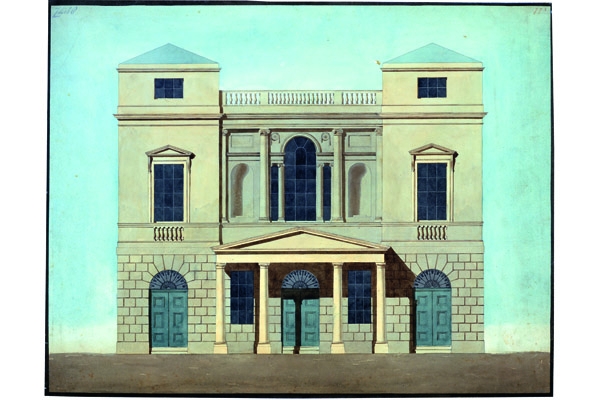James Wyatt was considered by George III to be ‘the first architect of the kingdom’, but he was also the unluckiest, or perhaps most careless, architect of his day. Fonthill Abbey, the Gothic extravaganza he designed for William Beckford, collapsed after just 25 years. He started building a new palace for the king at Kew, which was later blown up by George IV. His Tudor-Gothic remodelling of the Palace of Westminster went massively over budget, was deeply unpopular and employed a combination of timber and plaster that proved spectacularly flammable in 1834. And the commission that made Wyatt’s name, the assembly rooms of the Oxford Street Pantheon, was only 20 years old when it was devastated by fire. The little that remained was torn down in 1937 to make way for Marks & Spencer.
To achieve immortal fame, architects first have to hope their buildings stay standing; but Wyatt also failed to meet the aesthetic criteria of later critics. His irreverent — even gung-ho — approach to cathedral ‘improvement’ earned him the epithet ‘The Destroyer’ among the new antiquarian-preservationist lobby. And his austere take on neoclassical style was later seen as too severe, his country houses out of keeping with their surroundings. The architect C.R. Cockerell described Bryanston in Dorset as ‘a house built for a city’, with ‘the lower part looking like a prison’:
There is a cold and old stateliness which appals and awes me. Instead of having its roots and wings attaching it to the ground, it rises like a great box dropt upon the ground.
As early as 1778, the heroine of Fanny Burney’s novel Evelina decided the Pantheon was a place that ‘rather inspires awe and solemnity than mirth and pleasure’.
However, while the exteriors of Wyatt’s Palladian villas were designed to be imposing, signalling their owners’ wealth and social status, the true scope of his abilities was revealed inside.







Comments
Join the debate for just £1 a month
Be part of the conversation with other Spectator readers by getting your first three months for £3.
UNLOCK ACCESS Just £1 a monthAlready a subscriber? Log in